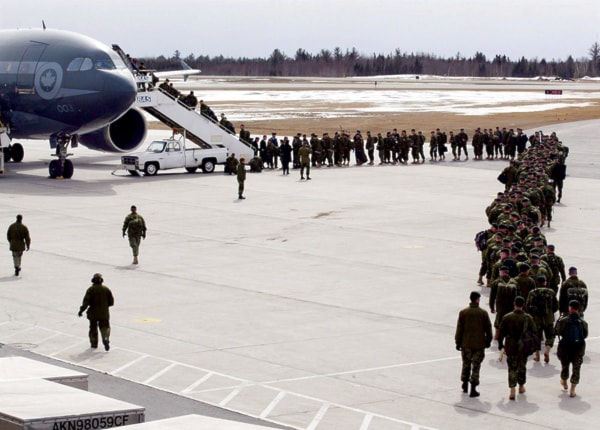DUBAI, United Arab Emirates — The loss of a not-so secret base in Dubai last year forced the Canadian military to use its unarmed Airbus planes for flights into Kandahar Airfield during the final phase of the combat mission, ministerial briefing notes say.
“Pressures imposed by the closure of Camp Mirage and the need to maximize flexibility in providing strategic airlift to support OP Athena have culminated in the (censored) using C-150 flights in KAF,” said a Nov. 1, 2010, briefing note prepared for Defence Minister Peter MacKay.
The Canadian military designates its Airbus passenger jets as the CC-150 Polaris but often refers to it simply as the C-150.
The air force initially certified the Airbus aircraft to fly into the war zone in 2007. But their use, according to the documents, was considered a “last resort” and a “calculated risk” by commanders on the ground.
The planes were given two trial runs into Kandahar in August and September last year, before Canada was evicted from Camp Mirage in Dubai, United Arab Emirates.
Their further use was to be approved by the commander of the 1st Canadian Air Division “on a case-by-case basis,” said the documents obtained by The Canadian Press under the Access to Information Act.
The air force has five Airbus aircraft. There were plans to use them sporadically during the recently completed withdrawal of combat troops from Kandahar. The time-honoured practice through much of the mission had been to use them to fly between Canada and Dubai.
Once in Dubai, soldiers and even VIPs would switch to a rugged turbo-prop C-130 Hercules transport for the two-hour flight into Kandahar. The Airbus planes do not have a defensive suite to deflect incoming missiles and are generally considered a civilian aircraft not suited for a war zone.
An air force official who spoke on background said the C-150 was always considered a “back-pocket capability” to be used only when necessary.
The closure of Camp Mirage following a diplomatic spat with the U.A.E. over commercial landing rights proved to be one of those occasions.
The airbase was a critical logistics and supply point for Canada’s mission in Afghanistan, and the loss of its use complicated the military withdrawal as the combat mission was coming to an end.
As a stopgap, the military routed Canadian flights through Cyprus.
Use of the Airbus planes was considered sensitive enough to be the subject for two briefing notes for MacKay in 2010, and for the chief of defence staff to ask for the minister’s permission to use them to bring home the Task Force Kandahar headquarters unit last fall.
Officials told MacKay the threat and risk situation was “stable.”
The scramble to get out of Camp Mirage put a strain on the air force as almost nine years worth of equipment was packed up in a hurry and flown out, according to the records.
Relations between Canada and the U.A.E. have remained frosty. Canadian visitors face the imposition of visas costing between $200 and $1,000.
A few weeks ago, the Conservative government inked an agreement with Kuwait to establish a replacement staging area.
Brig.-Gen. Charles Lamarre, in charge of the Kandahar withdrawal, says the arrangement will ease some of the transport strain. It may help the military get everything out of Kandahar before the December deadline set by Parliament, depending upon how quickly the packing and sorting can be done.
“It’s closer,” Lamarre said in a recent interview. “If by chance the production lines can surge ahead a little, certainly that advantage in transportation will be to our advantage.”
Not having to fly to Cyprus means the air force could potentially lay on more than the 18 C-17 cargo flights it had planned.
The military is flying out sensitive equipment and vehicles, and loading them onto a container ship for the trip back to Canada.
